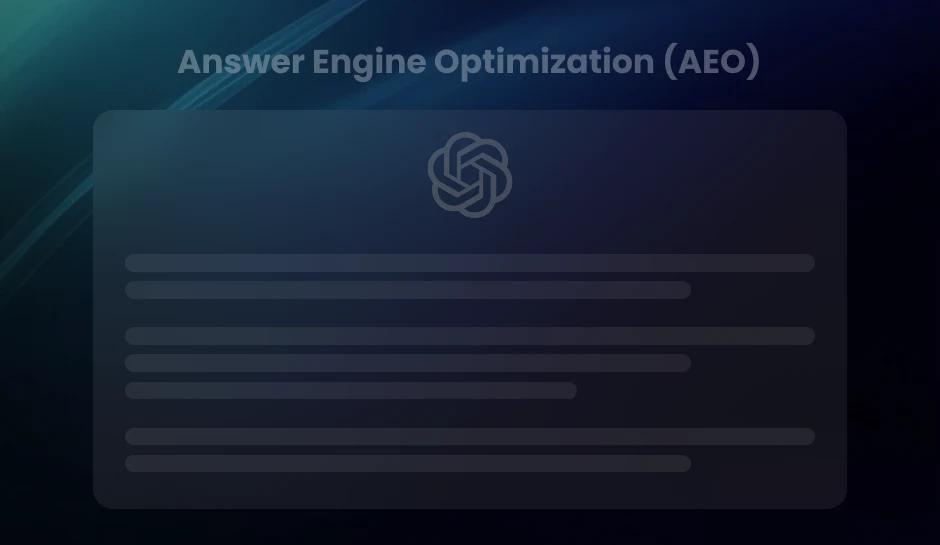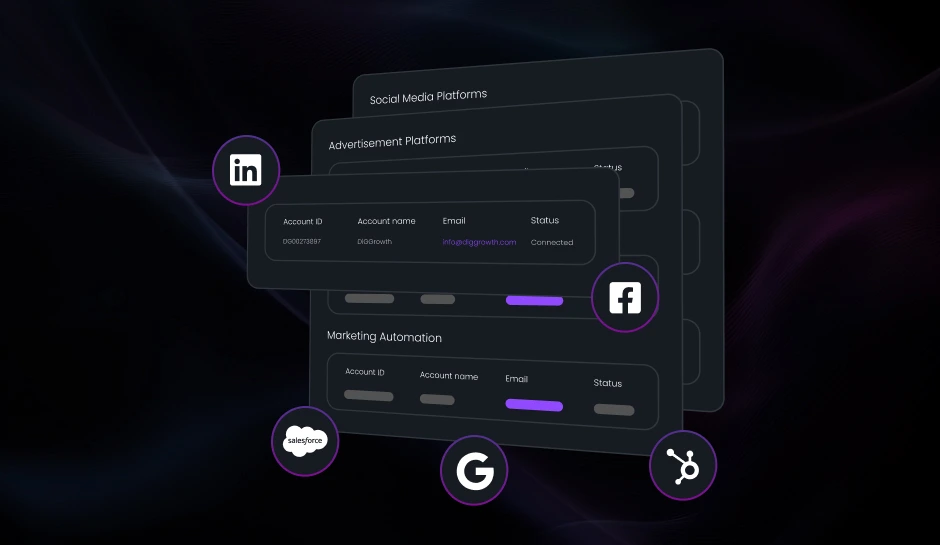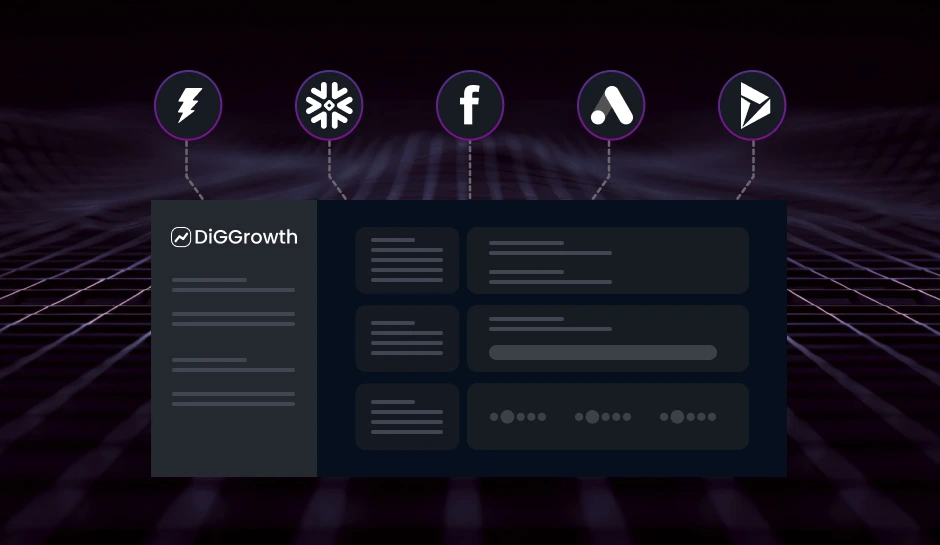
Aligning Sales and Marketing with Predictive Marketing Data Insights
Misalignment between sales and marketing is a common barrier to revenue growth, but predictive marketing data insights offer a solution. These insights enable both teams to collaborate more effectively, prioritize leads based on intent, and drive faster, more impactful sales cycles.
Your sales and marketing teams might be working hard, but if they are not working together, you are leaving revenue on the table. You can see it in the handoff process, where leads get passed without context. You can hear it in meetings, where each team measures success differently. And you can feel it in the results, when promising deals go quiet or campaigns fail to convert.
Misalignment is not just a communication issue. It is a performance issue. And the longer it goes unaddressed, the more it costs your business.
You do not need more meetings or longer reports. What you need is a way to bring both teams around the same priorities, using the same data. That is where predictive marketing data insights offer real value. By analyzing patterns in customer behavior and engagement, these insights give you clear direction on which leads to focus on, when to engage, and how to tailor your message.
In this blog, you will learn how to use predictive marketing data insights to create alignment between sales and marketing. You will see how shared visibility into customer intent can drive faster decisions, better outreach, and more predictable revenue.
The Root Of Misalignment
You might think the tension between sales and marketing comes down to lead quality or funnel ownership. But if you look closer, the real issues are more subtle—and far more damaging.
One of the biggest sources of misalignment is the difference in how each team reads buyer behavior. Sales often prioritizes immediate signals like direct outreach or meeting requests. Marketing tracks longer-term patterns such as page views, content downloads, or webinar attendance. Both perspectives are valid, but without a shared framework, these signals compete instead of complementing each other.
Then there is the role of assumptions. You may find your teams chasing the same types of accounts simply because they matched in the past. That kind of pattern recognition feels safe, but it limits your reach. If market conditions shift and your buyer profile evolves, sticking to outdated assumptions puts both teams at risk of falling behind.
Finally, the feedback loop is often broken. Once leads are handed over, marketing rarely gets to see what happens next. Sales, in turn, may not know what content or campaigns influenced those leads in the first place. This disconnect leads to missed opportunities for optimization, lost context, and inconsistent messaging that can push buyers away.
What Predictive Marketing Data Insights Offer
When your teams struggle to agree on which leads to prioritize or when to engage them, the problem often comes down to one thing—visibility. Predictive marketing data insights give you that visibility. They help both sales and marketing understand not only who is engaging, but also who is most likely to convert, and why.
Understanding The Role Of Predictive Insights
Predictive insights are built to reduce guesswork. By analyzing patterns in customer behavior, they help you forecast which leads are worth your attention. This includes lead scoring based on historical outcomes, tracking engagement across touchpoints, and identifying early intent signals that are easy to miss in traditional funnels.
Instead of basing decisions on intuition, you can now prioritize based on likelihood to buy. This moves from “who do we think is ready?” to “who has actually shown the right signals at the right time?” The result is faster outreach, better campaign focus, and fewer missed opportunities.
Types Of Data That Power Predictive Insights
You cannot generate accurate predictions without meaningful data. The most effective models pull from multiple sources to give you a full picture of buyer behavior. This typically includes:
-
CRM Activity: Notes, call logs, meeting frequency, and sales rep updates that show how leads are progressing.
- Engagement Metrics: Website visits, email opens, ad clicks, and content interactions that indicate interest.
- Historical Sales Outcomes: Data from past deals reveal what success has looked like and which traits often lead to it.
- Intent Signals: Buyer research behavior from third-party platforms, such as topic searches or competitor comparisons.
- Firmographics and Technographics: Company size, industry, tech stack, revenue bands, and market position that define fit.
Each data source adds depth to the prediction, allowing your teams to move from static segmentation to dynamic prioritization.
Surfacing High-Potential Accounts And Behaviors
This is where predictive models do more than summarize they surface the opportunities that matter most. By evaluating which data patterns consistently lead to closed deals, the model identifies accounts with similar behavior profiles. It also highlights actions that typically precede conversion, such as repeat visits to a pricing page or engagement with a product demo.
This lets you stop chasing every lead equally. Instead, you can focus your sales efforts on high-likelihood accounts and tailor your marketing strategies to accelerate their journey. The result is tighter coordination, improved efficiency, and stronger outcomes across the board.
Enhancing Lead Qualification and Handoffs
When sales and marketing teams are not aligned on lead qualification, it feels like you are constantly playing catch-up. Leads slip through the cracks, opportunities are missed, and the buyer’s experience suffers. But with predictive marketing data insights, you can completely transform the lead qualification process. These insights do not just give you data; they provide you with the clarity needed to make smarter, more aligned decisions between teams.
Shared Scoring Models Create Alignment
Traditional lead scoring can feel like a guessing game. Marketing might score leads based on their interactions with emails or landing pages, while sales may focus on how recently a lead filled out a form. Predictive models change that dynamic entirely by using data from a variety of sources to generate a shared, dynamic lead score. This score reflects a lead’s likelihood to convert, based on historical behavior, engagement, intent signals, and firmographics.
When both sales and marketing use the same scoring system, they are not working from different playbooks anymore. Instead, everyone is on the same page, aligned around what a “qualified lead” truly looks like. The result? Faster decision-making, improved collaboration, and most importantly, more leads that are ready for conversion.
Prioritization Based on Intent and Engagement
Not every lead is created equal. Some are just browsing, while others are actively researching solutions and looking for the right fit. Predictive insights can help you sort through the noise by tracking engagement patterns and intent signals that tell you which leads are most likely to buy.
When you know which leads are actively engaging with key content like product demos, pricing pages, or case studies you can prioritize them effectively. This means that sales teams focus on the hottest prospects, while marketing continues to nurture the colder ones until they are ready to move forward.
For example, imagine a lead that repeatedly visits your pricing page, downloads a product brochure, and engages with your email campaigns. With predictive insights, you will immediately recognize that this lead is further down the funnel, ready to be passed to sales. Instead of manually guessing which leads need attention, you are using data-driven signals to prioritize outreach and optimize both teams’ time.
Standardized Qualification Reduces Friction
When sales and marketing teams have different criteria for what makes a “qualified lead,” friction is inevitable. Sales might dismiss leads because they do not meet their own criteria, while marketing continues nurturing them, assuming they are viable. Predictive models solve this problem by standardizing lead qualification across the entire organization.
With clear, data-backed thresholds for qualification based on shared scoring models handing over leads becomes seamless. Marketing can pass leads to sales with confidence, knowing that they have been pre-qualified based on intent and engagement patterns. Sales, in turn, receives a steady stream of high-quality leads that are ready for personalized outreach, reducing the time spent on leads that are unlikely to convert.
A Real-World Example: How DiGGrowth’s Predictive Insights Improved Sales Engagement
A B2B software company in the tech industry was struggling with inefficient lead qualification and handoffs between marketing and sales. Leads were often passed with little context, leading to delayed follow-ups and missed opportunities. The company decided to implement DiGGrowth’s predictive marketing insights to optimize this process.
Through DiGGrowth’s predictive analytics, the company was able to score leads based on their behavioral data, such as product demo views, whitepaper downloads, and repeated visits to key pages on the website. One lead, in particular, had watched two product demos, downloaded a whitepaper, and engaged with several key content pieces over the past week. This behavior triggered a high predictive score, indicating that the lead was in the “ready to engage” stage.
When the marketing team passed the lead to sales, they provided detailed insights on the lead’s actions—such as which specific content they interacted with, their interests, and where they were in their buyer journey. Armed with this information, the sales team knew exactly how to tailor their approach, making the follow-up more relevant and timely.
The result? A streamlined lead handoff, reduced guesswork, and a significantly higher likelihood of conversion. DiGGrowth’s predictive insights helped the company increase sales efficiency, improve collaboration between teams, and ultimately drive higher revenue.
Pro Tip- Make sure that sales understand the “why” behind the predictive score. Sharing insights into what actions drove a lead’s high score like specific pages they visited or content they interacted with helps sales tailor their outreach and build stronger, more personalized connections.
How To Implement Predictive Marketing Data Insights Across Your Teams
Understanding the value of predictive marketing data insights is only the first step. To truly align your sales and marketing efforts, you need a clear plan to integrate these insights into daily workflows, systems, and decision-making processes. Implementation is where strategy becomes action, and where the potential for predictable revenue becomes a reality.
Step 1: Unify Your Data Sources
Predictive insights are only as strong as the data behind them. Start by ensuring your systems CRM, marketing automation platforms, website analytics, and third-party intent data are integrated and accessible. A centralized data hub eliminates silos and enables a full view of the buyer journey. This foundation is critical for generating accurate and actionable predictions.
Step 2: Define Shared Success Metrics
One of the biggest barriers to alignment is measuring success differently. Sales may focus on closed deals, while marketing may celebrate MQL volume. To truly benefit from predictive marketing data insights, you must establish joint KPIs such as conversion rates from predicted high-likelihood leads, speed to follow-up, and revenue generated from predictive-qualified accounts.
Step 3: Operationalize Predictive Scores
Once your model is live, ensure that predictive lead scores are visible and usable within both marketing and sales platforms. Whether it is through dashboards, lead routing rules, or notifications, make these insights part of your daily operations. The goal is to make predictive data an immediate and actionable part of your lead engagement strategy.
Step 4: Train Teams On Interpreting The Insights
Even the most sophisticated models will fall flat if your teams do not understand how to use them. Invest in training sessions to help both sales and marketing understand what the scores mean, how they are calculated, and how to use them to guide outreach, nurture strategies, and messaging. This builds confidence and encourages adoption across the board.
Step 5: Continuously Refine And Optimize
Your model should evolve as your buyer journey changes, new data sources become available, and market conditions shift. Build a feedback loop where both teams regularly share outcomes and lessons learned. This allows your predictive model to improve over time and stay aligned with business goals.
Key Takeaways
- Predictive marketing data insights eliminate guesswork by revealing real-time buyer behavior and engagement trends.
- Buyer intent signals allow you to prioritize outreach based on actual readiness, not assumptions.
- Predictive models spotlight high-potential accounts, allowing teams to focus efforts where they matter most.
- Standardized handoffs reduce lead leakage and ensure a smoother buyer experience from awareness to close.
Conclusion
When teams align around data, they align around results. Predictive marketing data insights do more than refine your targeting or improve lead quality, they give your sales, and marketing functions a common language. This shared visibility does not just remove friction; it creates forward momentum. You begin to operate with greater clarity, act on real-time intent, and engage buyers before your competitors even know they are in-market. For organizations looking to scale with precision, predictive insights are no longer optional, they are foundational.
Our experts at DiGGrowth can help you unify your sales and marketing strategy with intelligent, data-driven insights tailored to your buyer journey. Reach out to us at info@diggrowth.com
Ready to get started?
Increase your marketing ROI by 30% with custom dashboards & reports that present a clear picture of marketing effectiveness
Start Free Trial
Experience Premium Marketing Analytics At Budget-Friendly Pricing.

Learn how you can accurately measure return on marketing investment.
Additional Resources
Answer Engine Optimization (AEO): The New Frontier of SEO in 2025
As digital experiences continue to evolve, so does...
Read full post postIntegrating Data from Different Channels for a Holistic View of Your Marketing Performance
Who's your ideal customer? Where do they come...
Read full post postGet Your Channels to Play Nice: Integrated Data for Smarter Marketing
If you’re a savvy marketer, you’re living in...
Read full post postFAQ's
Results vary, but many organizations begin to see improved lead prioritization and faster response times within a few weeks, especially once teams align around shared scoring models and intent-based engagement signals.
o, they enhance traditional methods by layering in behavioral and intent data. Predictive models make lead scoring more dynamic and accurate, reducing bias and helping teams focus on leads with the highest conversion potential.
You will need a platform that integrates your CRM, marketing automation, web analytics, and third-party intent data sources. Machine learning models then use this combined data to generate accurate predictions and prioritization scores.
They highlight which content types and topics drive engagement and conversions. Marketing teams can then refine their strategy by focusing on assets that move leads forward in the funnel, based on real engagement patterns.
Yes, predictive insights are especially powerful in ABM. They help identify high-fit accounts showing early buying signals, enabling precise targeting, personalized outreach, and efficient resource allocation across sales and marketing efforts.
 Shahzad Mussawir
Shahzad Mussawir  Rahul Sachdeva
Rahul Sachdeva 

